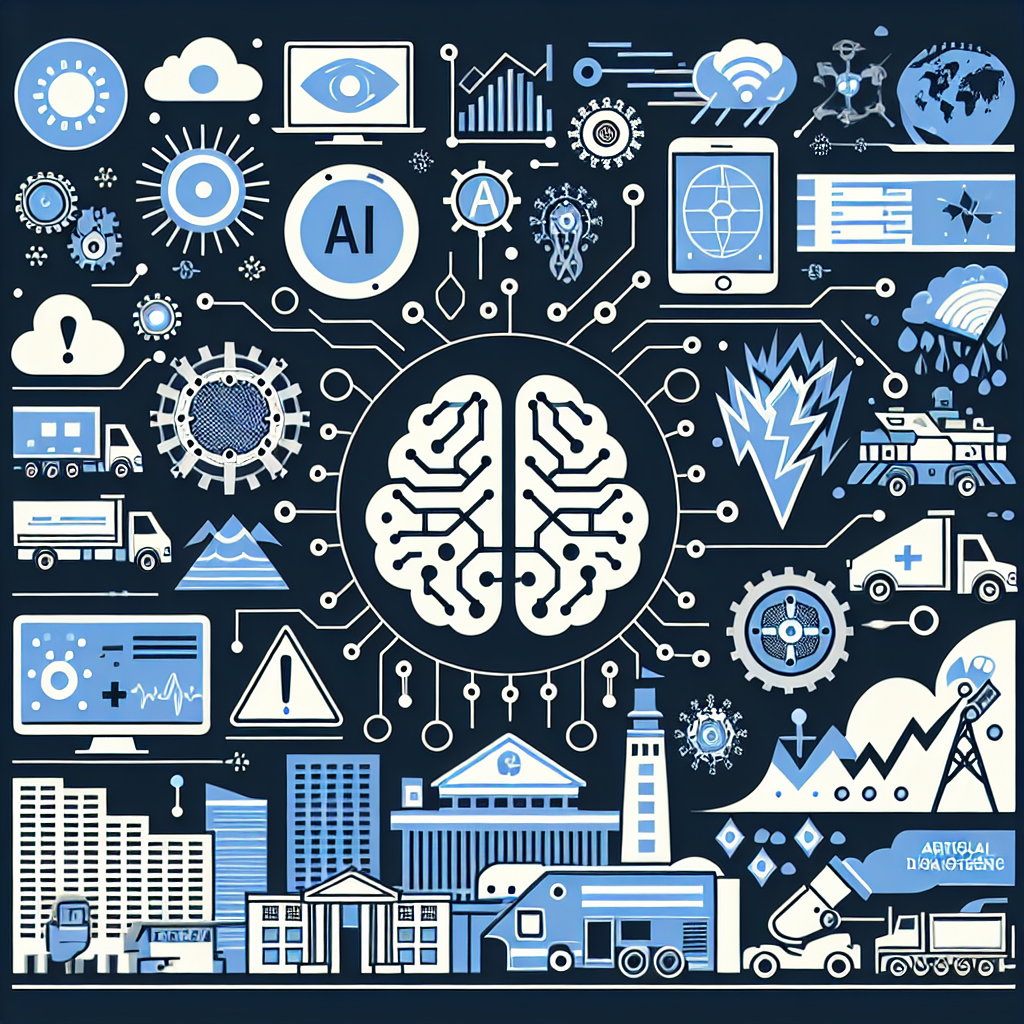In recent years, the world has seen an increase in the frequency and intensity of natural disasters such as hurricanes, earthquakes, and wildfires. These disasters have had devastating effects on communities, causing loss of life, destruction of property, and disruption of essential services. In response to these challenges, governments around the world have been exploring the use of artificial intelligence (AI) to enhance disaster preparedness and response efforts.
AI has the potential to revolutionize disaster management by providing governments with advanced tools and technologies to better predict, prepare for, and respond to disasters. From analyzing vast amounts of data to identifying patterns and trends, AI can help governments make more informed decisions and allocate resources more effectively during emergencies. In this article, we will explore the impact of AI on government disaster preparedness and response, as well as some of the key challenges and opportunities associated with its implementation.
Impact of AI on Disaster Preparedness
One of the key ways AI is transforming disaster preparedness is through the use of predictive analytics. By analyzing historical data and real-time information, AI algorithms can identify patterns and trends that may indicate an impending disaster. For example, AI can help predict the path of a hurricane or the likelihood of an earthquake occurring in a specific region, allowing governments to take proactive measures to mitigate the impact of these events.
AI can also help governments better understand the vulnerabilities of their communities and infrastructure. By analyzing data on population density, building codes, and critical infrastructure, AI can identify areas that are most at risk during a disaster and prioritize resources accordingly. This can help governments develop more targeted preparedness plans and improve their overall resilience to disasters.
Another key benefit of AI in disaster preparedness is its ability to automate and streamline processes. By using AI-powered algorithms to analyze data and make recommendations, governments can save valuable time and resources during the planning and preparedness phases. This can help ensure that response efforts are more efficient and effective, ultimately saving lives and minimizing damage during a disaster.
Impact of AI on Disaster Response
In addition to enhancing preparedness efforts, AI is also transforming the way governments respond to disasters. One of the key benefits of AI in disaster response is its ability to analyze real-time data and provide situational awareness to decision-makers. By monitoring social media, news reports, and sensor data, AI can help governments quickly assess the scope and impact of a disaster and make informed decisions about resource allocation and deployment.
AI can also help governments coordinate response efforts more effectively. By using AI-powered algorithms to optimize logistics and resource allocation, governments can ensure that essential supplies and personnel are deployed to the areas most in need. This can help streamline response efforts and improve the overall coordination of emergency operations.
Furthermore, AI can enhance communication and information sharing during a disaster. By using chatbots and virtual assistants, governments can provide real-time updates and guidance to affected communities, helping to keep them informed and safe. AI can also help governments analyze feedback and sentiment from the public, allowing them to better understand community needs and concerns during a disaster.
Challenges and Opportunities
While the use of AI in disaster preparedness and response offers many benefits, there are also challenges that governments must address. One of the key challenges is the need for robust data infrastructure and governance. AI relies on vast amounts of data to operate effectively, and governments must ensure that they have the necessary systems in place to collect, store, and analyze this data securely and ethically.
Another challenge is the potential for bias in AI algorithms. If not properly trained and monitored, AI algorithms can inadvertently perpetuate existing biases and inequalities, leading to unfair or discriminatory outcomes. Governments must be vigilant in ensuring that their AI systems are transparent, accountable, and free from bias, especially when making critical decisions during a disaster.
Despite these challenges, the use of AI in disaster preparedness and response presents many opportunities for governments to enhance their capabilities and improve outcomes. By investing in AI technologies and expertise, governments can better predict, prepare for, and respond to disasters, ultimately saving lives and reducing the impact of these events on communities.
FAQs
Q: How can AI help governments predict natural disasters?
A: AI can analyze historical data and real-time information to identify patterns and trends that may indicate an impending disaster, such as the path of a hurricane or the likelihood of an earthquake occurring in a specific region.
Q: How can AI help governments prioritize resources during a disaster?
A: AI can analyze data on population density, building codes, and critical infrastructure to identify areas that are most at risk during a disaster and prioritize resources accordingly.
Q: How can AI help governments coordinate response efforts during a disaster?
A: AI can optimize logistics and resource allocation to ensure that essential supplies and personnel are deployed to the areas most in need, helping to streamline response efforts and improve coordination.
Q: What are some of the challenges associated with using AI in disaster preparedness and response?
A: Challenges include the need for robust data infrastructure and governance, the potential for bias in AI algorithms, and the importance of ensuring transparency and accountability in AI systems.
Q: What are some of the opportunities associated with using AI in disaster preparedness and response?
A: Opportunities include the ability to enhance predictive capabilities, prioritize resources more effectively, and improve communication and information sharing during a disaster, ultimately saving lives and reducing the impact on communities.

